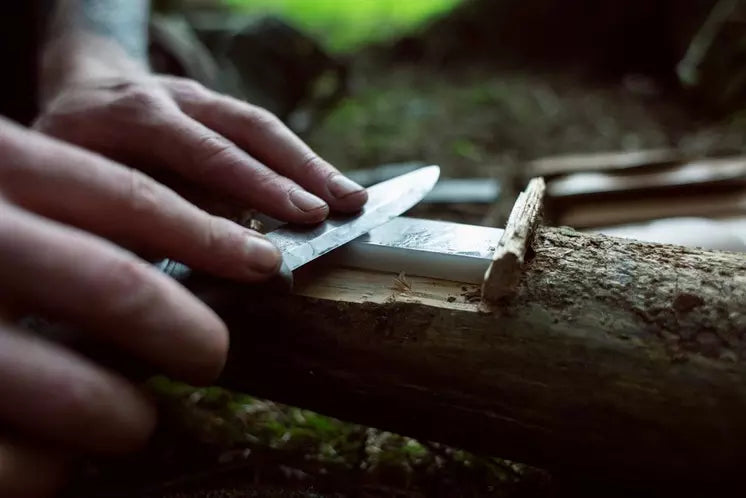Why Sharpening Matters
A knife’s performance depends entirely on its sharpness.
A dull blade not only reduces efficiency it also increases the risk of accidents.
The sharper the knife, the safer and more precise your cuts will be.
At Çakıroğlu Knives, our masters say:
“Sharpness is the soul of the blade.”
Sharpening is not just about restoring the edge it’s about bringing the knife back to life.
When to Sharpen Your Hunting Knife
Here are the signs that your knife is ready for sharpening:
-
You need to apply more pressure when cutting.
-
The blade snags or tears rather than slicing cleanly.
-
It fails the paper or string cutting test.
-
The blade surface looks dull or uneven.
If you notice any of these, it’s time to restore your knife’s precision.
⚙️ Step-by-Step Hunting Knife Sharpening Guide
1. Choose the Right Tools
Successful sharpening starts with the right tools:
-
Whetstone: The most precise and trusted sharpening method.
-
Honing rod: Great for minor daily edge corrections.
-
Sharpening oil or water: Prevents clogging and reduces friction.
Pro Tip:
For carbon steel knives, use a water stone; for stainless steel, an oil stone works best.
2. Prepare the Knife and the Stone
Soak your whetstone in water for a few minutes before use to fill its pores.
Secure the stone on a non slip surface for stability.
A stable setup ensures consistent results and safety during sharpening.
3. Find the Correct Angle
The sharpening angle is crucial typically between 15° and 20°.
-
Hunting knives: around 20°
-
Kitchen knives: around 15°
-
Heavy-duty knives (camp or bushcraft): up to 25°
If the angle is too steep, the edge dulls faster; too shallow, and it loses strength.
To maintain precision, use an angle guide if available.
4. Sharpen with Consistent Pressure
Move the knife across the stone in smooth, controlled motions as if you’re shaving a thin layer off the surface.
Work from heel to tip, maintaining even pressure on both sides.
Keep the stone wet throughout the process.
Pro Tip:
Repeat 10–15 passes per side, maintaining the same angle. Patience and consistency are key.
5. Refine and Polish the Edge
Once sharpening is complete, flip the stone to its finer grit side.
Lightly polish both sides of the edge to smooth out microscopic imperfections.
This step enhances sharpness and gives your blade that mirror-like finish.
6. Clean and Protect the Blade
Rinse the knife in warm water and dry it completely.
Apply a thin coat of knife maintenance oil or food safe mineral oil to protect the steel from moisture and oxidation.
This not only prevents rust but also preserves the blade’s natural shine and texture.
7. Make Maintenance a Routine
Regular maintenance keeps your knife sharp and ready for the field.
For active hunters or outdoorsmen, sharpen your knife once a month or after every few uses.
Always inspect the blade after heavy tasks like skinning or wood carving.
Remember:
“A well-maintained knife is a safe knife.”
Special Care for Handmade Hunting Knives
Each handmade Çakıroğlu knife carries its own character and balance.
When sharpening, avoid applying excessive pressure let the blade glide naturally over the stone.
Every handmade knife bears the mark of its craftsman, and sharpening it is not just maintenance it’s an act of respect toward craftsmanship.
Conclusion: The Art of Edge and Mastery
Sharpening a hunting knife is more than a mechanical task it’s part of a craftsman’s ritual.
With the right tools, proper angles, and steady hands, you ensure that your knife remains a lifelong companion in the field.
At Çakıroğlu Knives, we believe every blade should endure for a lifetime forged by true masters, sustained by mindful owners.



